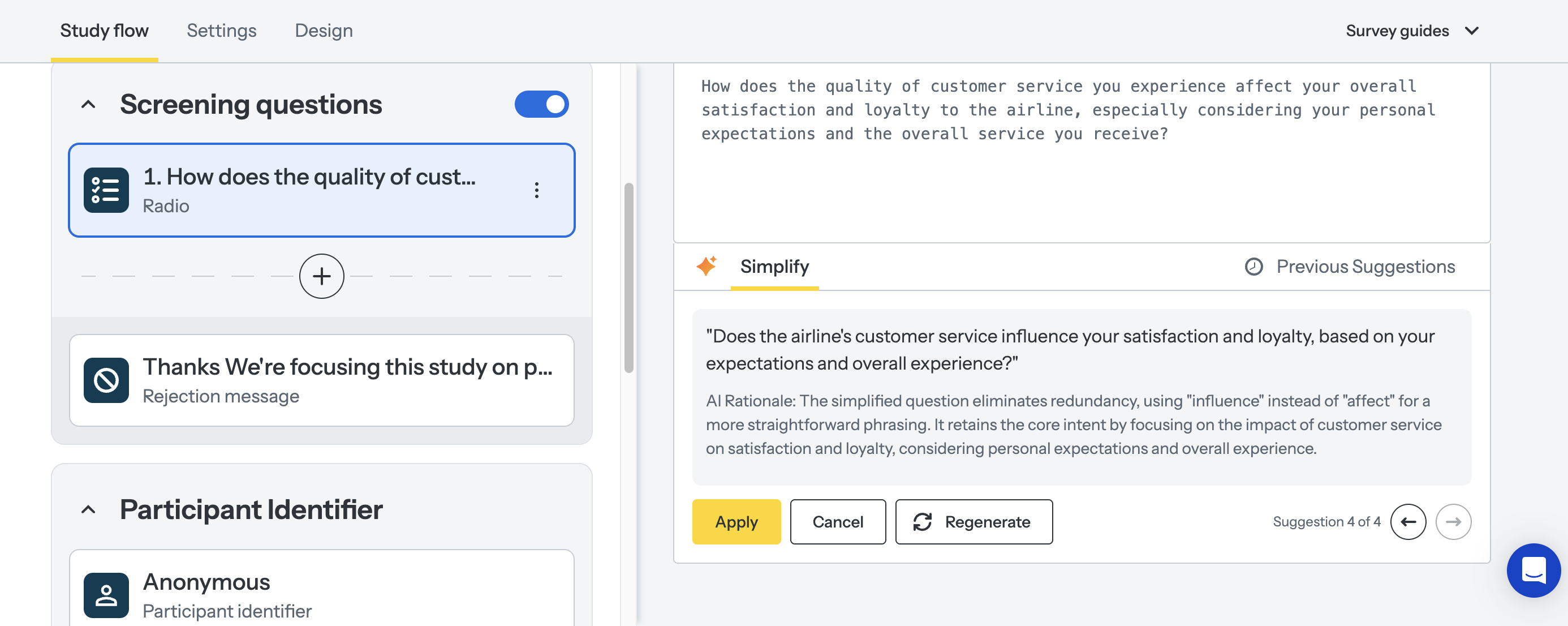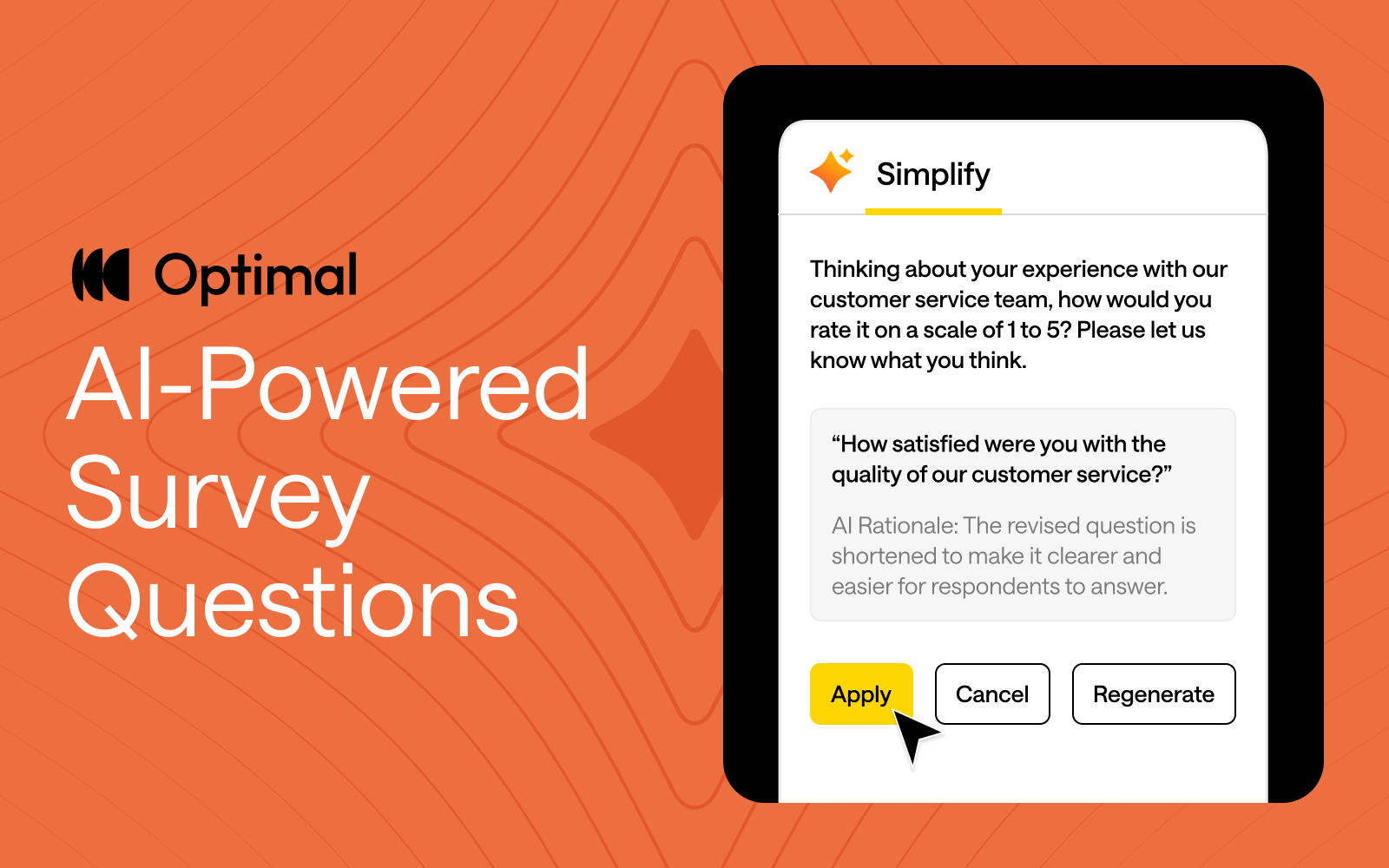At Optimal, we believe in the transformative potential of AI to accelerate your workflow and time to insights. Our goal is simple: keep humans at the heart of every insight while using AI as a powerful partner to amplify your expertise.
By automating repetitive tasks, providing suggestions for your studies, and streamlining workflows, AI frees you up to focus on what matters most—delivering impact, making strategic decisions, and building products people love.
That’s why we’re excited to announce our latest AI feature: AI-Powered Question Simplification.
Simplify and Refine Your Questions Instantly
Ambiguous or overly complex wording can confuse respondents, making it harder to get reliable, accurate insights. Plus, refining survey and question language is manual and can be a time-consuming process with little guidance. To solve this, we built an AI-powered tool to help study creators craft questions that resonate with participants and speed up the process of designing studies.
Our new AI-powered feature helps with:
- Instant Suggestions: Simplify complex question wording and improve clarity to make your questions easier to understand.
- Seamless Editing: Accept, reject, or regenerate suggestions with just a click, giving you complete control.
- Better Insights: By refining your questions, you’ll gather more accurate responses, leading to higher-quality data that drives better decisions.
Apply AI-Powered Question Simplification to any of your survey questions or to screening questions, and pre- and post-study questions in prototype tests, surveys, card sorts, tree tests, and first-click tests.

AI: Your Research Partner, Not a Replacement
AI is at the forefront of our innovation at Optimal this year, and we’re building AI into Optimal with clear principles in mind:
- AI does the tedious work: It takes on repetitive, mundane tasks, freeing you to focus on insights and strategy.
- AI assists, not dictates: You can adapt, change, or ignore AI suggestions entirely.
- AI is a choice: We recognize that Optimal users have diverse needs and risk appetites. You remain in control of how, when, and if you use AI.
Ready to Get Started?
Keep an eye out for more updates throughout 2025 as we continue to expand our platform with AI-powered features that help you uncover insights with speed, clarity, and more confidence.
Want to see how AI can speed up your workflow?
Apply AI-Powered Question Simplification today or check out AI Insights to experience it for yourself!






